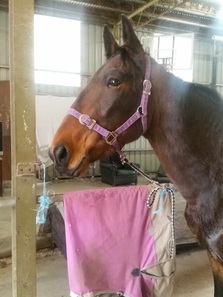
Squamous Cell Carcinoma (SCC) of Horses
Squamous cell carcinoma is the most common cancer of the eye and eyelids in horses. Horses have a lack of pigmentation around the eyelids are at greater risk of developing SCC.
These breeds include all draft breeds and Appaloosas.
Other influential factors include:
Common locations of squamous cell carcinomas in horses include:
Treatment depends upon the location:
Recurrence
One of the most common causes of treatment failure is due to recurrence. Due to the nature of the tumour, SCC are initially locally invasive. However tumour cells can have long extensions making excision margins difficult to predict. It is important to have a cancer watch program in place to ensure that early lesions are not missed. Revisits are scheduled initially at 1, 3 and 6 months apart. Following this, careful re-examination every 6 months is advised. It is equally important that we minimise exposure to sunlight and carefully check the eyes.
Should you have any questions or concerns please contact us on 03 9545 0103.
Squamous cell carcinoma is the most common cancer of the eye and eyelids in horses. Horses have a lack of pigmentation around the eyelids are at greater risk of developing SCC.
These breeds include all draft breeds and Appaloosas.
Other influential factors include:
- Geographical location
- Altitude
- Exposure to solar radiation.
Common locations of squamous cell carcinomas in horses include:
- Third eyelid
- Cornea/scleral margin (limbal based)
- Cornea
- Conjunctiva and orbit
Treatment depends upon the location:
- Lesions on the third eyelid can be effectively treated by removal of the third eyelid.
- Those on the cornea can be excised and treated with Mitomycin C or radiation.
- Limbal based lesions can be excised and treated with freezing, topical chemotherapeutic drugs and radiation.
Recurrence
One of the most common causes of treatment failure is due to recurrence. Due to the nature of the tumour, SCC are initially locally invasive. However tumour cells can have long extensions making excision margins difficult to predict. It is important to have a cancer watch program in place to ensure that early lesions are not missed. Revisits are scheduled initially at 1, 3 and 6 months apart. Following this, careful re-examination every 6 months is advised. It is equally important that we minimise exposure to sunlight and carefully check the eyes.
Should you have any questions or concerns please contact us on 03 9545 0103.
